In the 1st Academy Awards, he was nominated and won the award for Best Art Direction (though then called "Interior Decoration") for two films. Like oh so many in these first couple of Academy Awards, one of the films is lost. Luckily, one isn't, and we can finally review our first official Academy Award winner.
As for what we don't get to see:
THE DOVE (1927)
DIRECTED BY: Roland West
STARRING: Norma Talmadge, Noah Beery, Gilbert Roland
WON: Best Art Direction (William Cameron Menzies)
Almost all of Menzies' work took place in foreign locations. The Dove takes us to Hollywood's romantic Mexic... wait, what? Oh sorry, it's in some unnamed location. It was GOING to be Mexico, but for some hazy political reasons that I'm still trying to research, it wasn't allowed for any movie at the time to say anything bad about the place.

Gilbert Roland as Gilbert Roland in "The Dove"
The plot is the classic boy-meets-girl-but-other-boy-wants-girl-and-there-is-a-bit-of-kidnapping. Sadly, I can't say any more then that. Only four of it's nine reels survive at the Library of Congress, and I'm a bit too broke right now for air travel.
So, let's go ahead and move on to the movie we CAN watch.
TEMPEST (1927)
DIRECTED BY: Sam Taylor
STARRING: John Barrymore, Camilla Horn, Louis Wolheim
WON: Best Art Direction (William Cameron Menzies)
Tempest, not to be confused with the Shakespeare play of the same name, takes place in Russia in the early 1910s, during the Russian Revolution that resulted in the Soviet Union. Now, Russia was always a favorite location of the silent era. All the curvy doorways and roofs were visually more interesting then our dumb ol' box houses. Many films in Russia tend to take it over the top. Take Josef von Sternberg's 1934 The Scarlet Empress. Sternberg's Russia is one full of melting gargoyles, bell towers and secret passages. It's almost cartoonish (though it works for that film).
So, imagine my surprise when I found that Menzies, the man who did Things to Come and Invaders from Mars, played Russia like it was a real place. Oh, sure, there's plenty classic examples of Russian architecture...
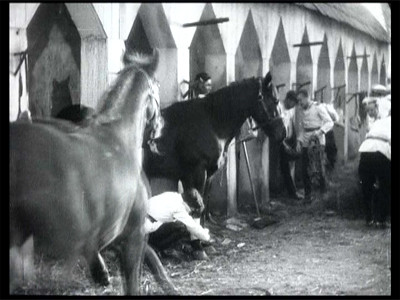
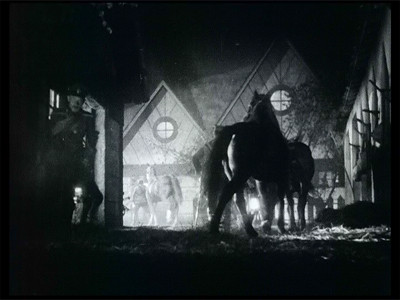
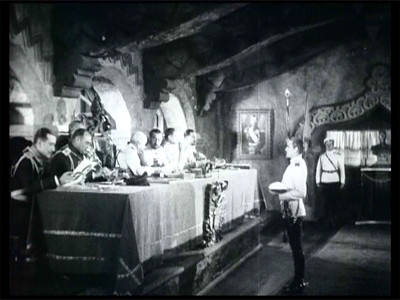
But the movie takes the time to explore the dirtier, more down to earth, more human parts of Russia, like this shower thingy:
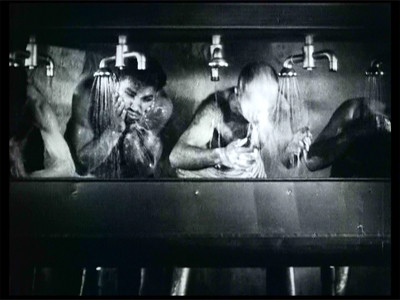
And here's the home of our film's hero, Lieutenant Ivan Markov:
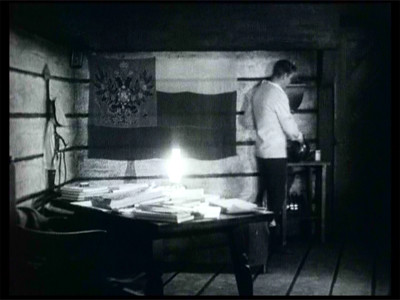
God, it's hard to imagine a day before kitty posters.
Ivan Markov is a man who believes Russia is whatever the guy in charge tells him it is. A peasant going up ranks in the army, he just wants to prove himself. Markov is played by John Barrymore, who could cut cheese with his profile.

However, things fall apart when he falls in love with the General's daughter, played by Camilla Horn and her giant anime eyes.

Unfortunately, the princess (daughter of a general=princess?) isn't all that taken by him. In fact, she hates him purely for his past as a peasant. Depressed by his rejection, Markov decides to get REALLY drunk.
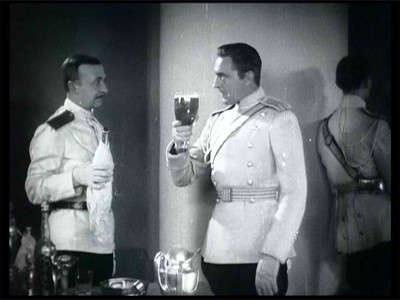
Anyone who knows their silent film star history might flinch at this. John Barrymore's career was ruined in the 30s by alcoholism, and died of liver disease. Still, this film sets up the best shot of the entire picture, in which a drunken Markov watches his fellow dancers from the bottom of his glass.
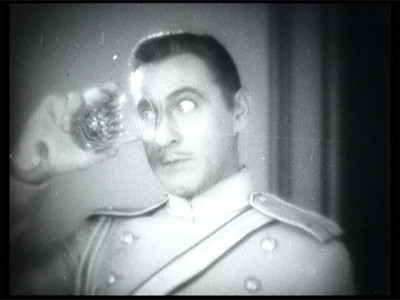
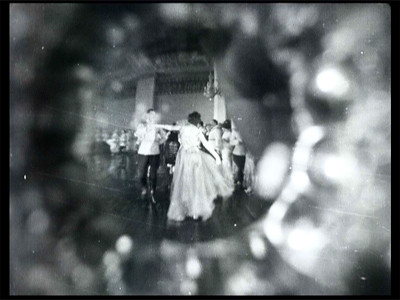

Talkies almost killed moments like this.
This film has a great deal of old school special effects. The film opens with a model of the Russian city the army is stationed in.

We pan across it one way, and start panning and zooming the other, and the cut to a real set is pretty damn seamless.

In another great scene, Markov, his passion for the princess discovered, is thrown into a jail cell to rot. After several months, Markov starts to go slightly mad, first hallucinating the war, and then the princess' mocking face.
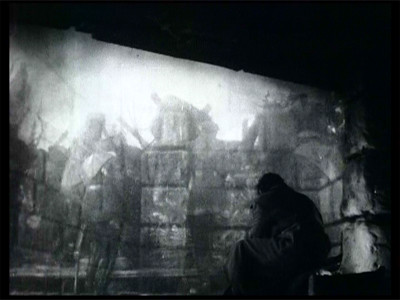

It's not perfect. You can see the edges of the screen the images are projected on pretty easily, but the scene has it's effect.
Ok, so Russia is realistic and there are great scenes. Is there anywhere where the film falls flat in the visual department? Well, kind of. The costuming just seems to fall flat... but it doesn't.
Ok, here's the deal. There's a lot of emphasise put on the clothes the characters where. The clothes in this movie are supposed to tell people what your social status and rank are. They're so important in the story, when Markov is removed from the army, they hold a demonstration of ripping off his uniform to symbolize his fall. The demonstration seems more like death by firing squad.
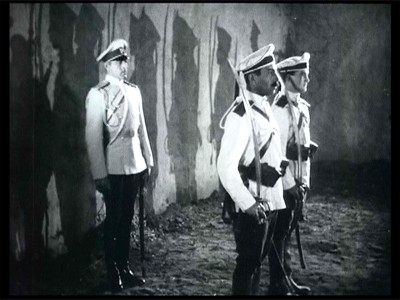
Later in the film, the general is captured by the new Red Terror, he's publicly humiliated by having his clothes ripped apart.
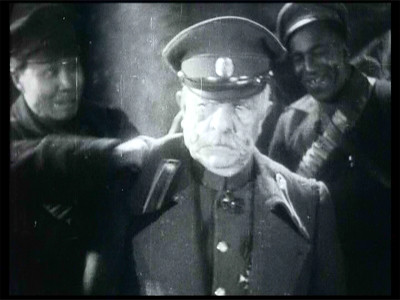
So, as much as a metaphor clothes are used in the film, the clothes seem to be rather bland. If there was one part of the film to go overboard on the production design, it should have been wardrobe, if nothing then to even it out.
I don't want to end the film on a low note, though, so I saved one last great scene for last. The Red Terror have taken over, and are executing members of the old army. It's the general's turn to face his fate.
We see the firing squad. Behind them is a propaganda poster with a caricature of the general, looking evil and menacing. The general these people have been symbolically fighting this entire time.
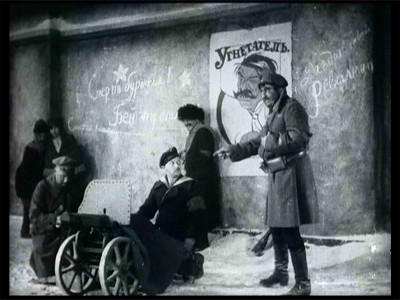
Then we cut to the real general, alone, small.
Waiting.

No comments:
Post a Comment